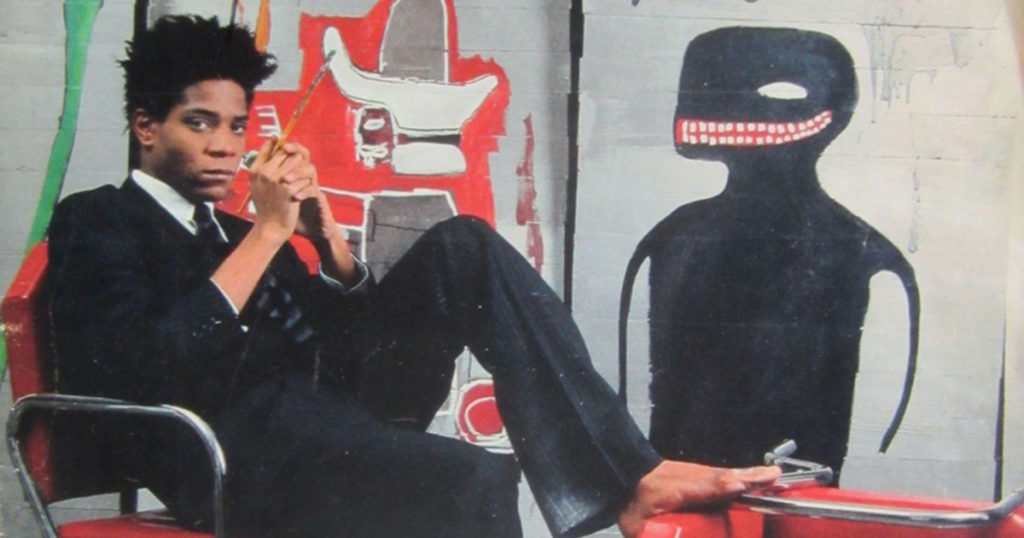Artist Jean-Michel Basquiat was born December 22, 1960 in Brooklyn, New York to Puerto Rican mother Matilde Andrades and Haitian father Gerard.[1] He was extraordinarily intelligent and began reading and writing by the age of four and learned to speak English, Spanish and French before turning 11.[2] [3] He was first exposed to art during visits to the Brooklyn Museum of Art with his mother, and his teachers encouraged him to pursue the development of his artistic talents.[4] His childhood became turbulent when he was hit by a car at the age of 8 and spent a month in the hospital due to internal injuries.[5] During Basquiat’s recovery, his mother gave him the drawing book Gray’s Anatomy, but his parents soon split up.[6] Unfortunately, his mother became mentally ill and spent time in and out of institutions, so his dad was left alone to raise him and his two younger sisters, Lisane and Jeanine.[7]
In 1977, Jean-Michel began spray painting the moniker SAMO© (Same Old Shit) with his school friends Al Diaz and Shannon Dawson on subways and walls in the SoHo and East Village areas.[8]SAMO© was defined as “an end to mindwash religion, nowhere politics, and bogus philosophy.”[9] The artistic movement spread and was covered in the SoHo News and Village Voice, but Basquiat’s technique soon transformed into a more “painterly” and “heavy-handed” style that would soon be displayed in galleries.[10] Basquiat also began selling painted post cards and T-shirts to support himself after deciding to drop out of City As School in the tenth grade and leave home in 1978.[11] In 1979, Basquiat and his team ended the SAMO© series by tagging “SAMO© is dead,” on the walls of several Soho buildings.[12]
Basquiat’s popularity soon landed him various appearances on the show TV Party in 1979 and a starring role in Glenn O’Brien’s independent film New York Beat (later renamed Downtown 81 in 2001) about an unlucky painter in the downtown music scene.[13] The soundtrack featured music from Basquiat’s art noise band called Gray which included members Wayne Clifford, Michael Holman, Nick Taylor and Shannon Dawson.[14] He also made a cameo in Blondie’s “Rapture” video as the DJ.[15]
In 1980, Basquiat’s art was exhibited for the first time at the Times Square Show, a production sponsored by Colab (Collaborative Projects Incorporated).[16] His work became more popular and spread throughout New York and Europe in art shows which also featured Keith Haring and Barbara Kruger.[17] In 1981, he was featured in his first major article entitled “The Radiant Child” in Artforum magazine, and he became friends with future collaborator and revered artist Andy Warhol in 1983.[18] The two discussed and held the same views on the patronization of African American art and collaborated on many paintings together though none were critically acclaimed.[19]
In 1985, Basquiat appeared on the cover of The New York Times Magazine and posed for the Cathleen McGuigan article “New Art, New Money: The Marketing of an American Artist.”[20] At age 25, he traveled to Africa for the first time to Abidjan, Ivory Coast and became the youngest artist to have an exhibit in Kesnter-Gesellschaft in Hanover.[21] In 1987, he had his first solo show in two years at a New York gallery called the Baghoomian, but shocked the world when he met his untimely demise at the age of 27 after overdosing on heroin in his New York studio on August 12, 1988.[22] [23] Basquiat, a film based on his life, was released in 1996, and the Brooklyn Museum of Art produced a further retrospective of his work in 2005.[24]
Origin:
Brooklyn, New York
Style:
- Collage style employing photocopies of his own work into larger paintings in which he would paint over and rearrange.
- Created montages of various elements—stylistically traces of street art days as well as incorporations of academic drawing styles mixed with a more painterly approach and controlled energy.
- Text was often incorporated into his drawings and paintings.
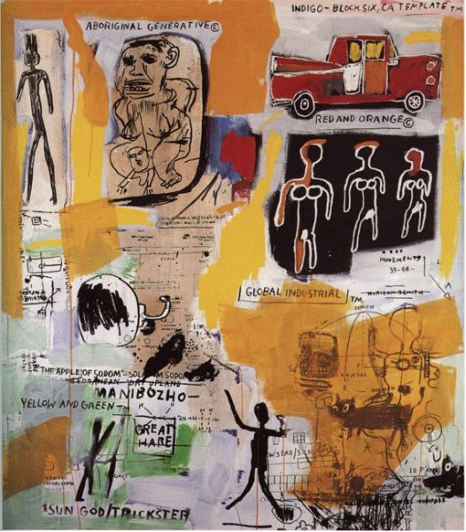
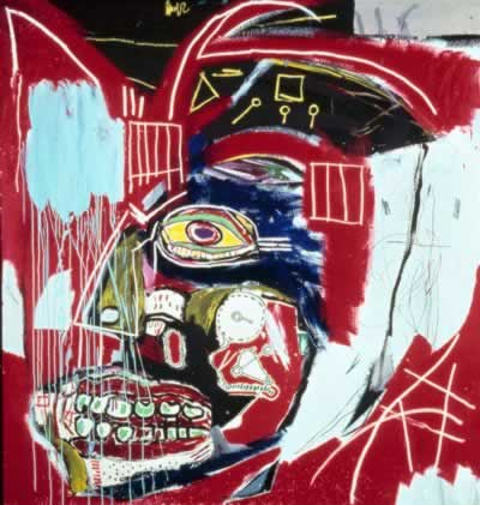

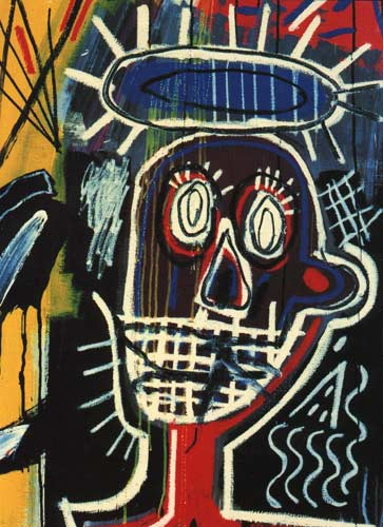
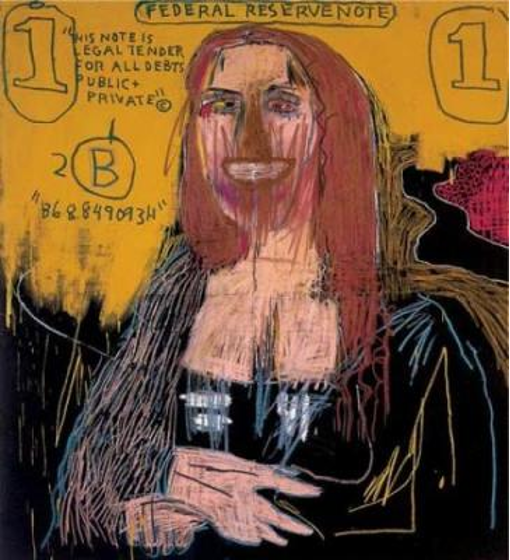
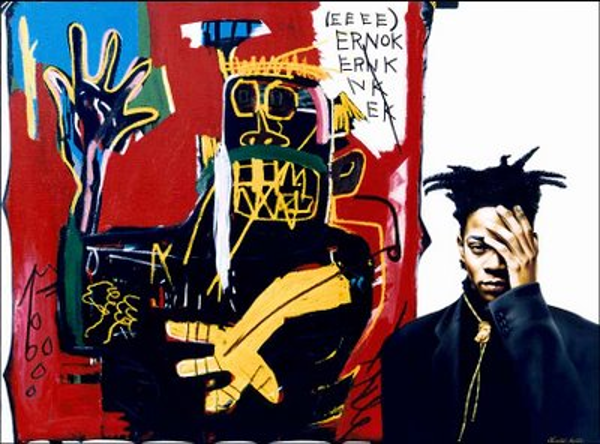
Cited Sources
[1] http://www.egs.edu/library/jean-michel-basquiat/biography/
[2] Ibid.
[3] http://www.kiffecoco.com/2010/03/jean-michel-basquiat-1960-1988.html
[4] http://www.egs.edu/library/jean-michel-basquiat/biography/
[5] Ibid.
[6] Ibid.
[7] Ibid.
[8] http://english.emory.edu/Bahri/Basquiat.html
[9] Ibid.
[10] http://www.egs.edu/library/jean-michel-basquiat/biography/
[11] Ibid.
[12] http://en.wikipedia.org/wiki/Jean-Michel_Basquiat
[13] http://www.egs.edu/library/jean-michel-basquiat/biography/
[14] http://en.wikipedia.org/wiki/Jean-Michel_Basquiat
[16] http://english.emory.edu/Bahri/Basquiat.html
[17] Ibid.
[18] http://en.wikipedia.org/wiki/Jean-Michel_Basquiat
[19] http://english.emory.edu/Bahri/Basquiat.html
[20] Ibid.
[21] Ibid.
[22] Ibid.
[23] http://www.egs.edu/library/jean-michel-basquiat/biography/
[24]Ibid.


